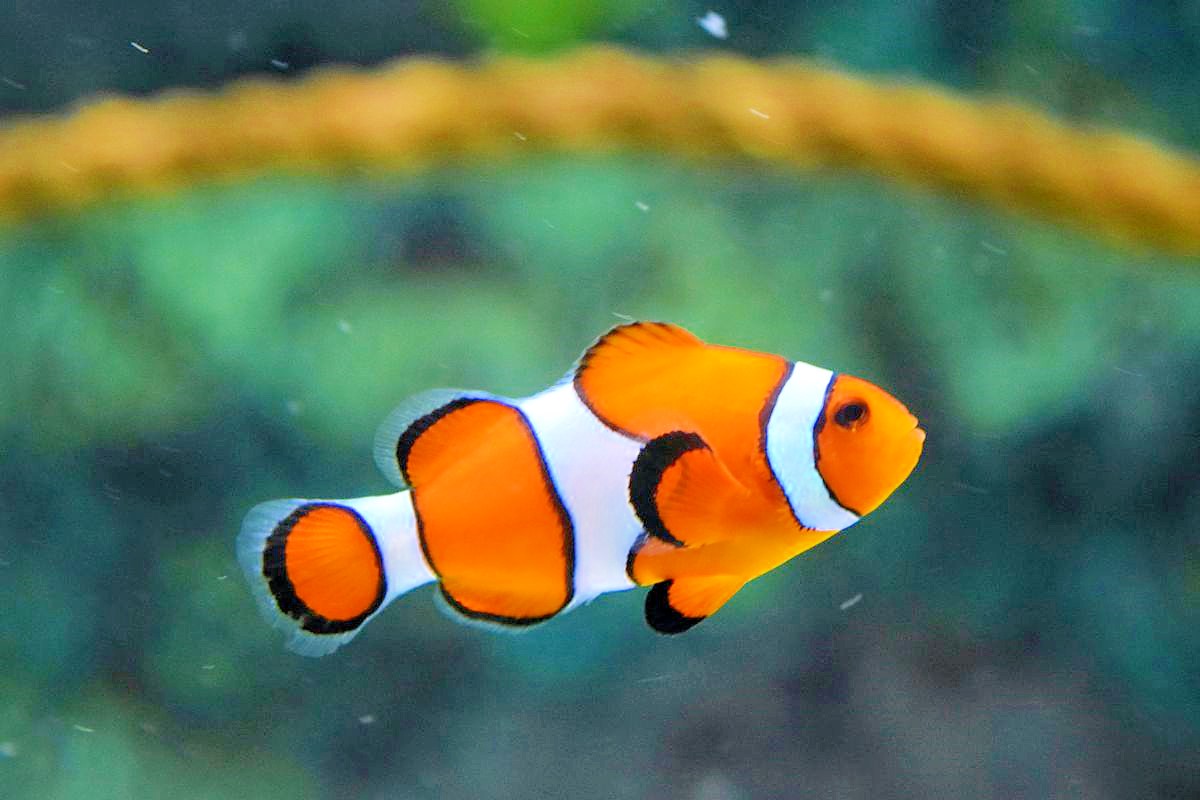Hello there! 👋 We all know that in the animal kingdom, there are some fascinating creatures that possess both male and female reproductive organs. 🐛 They can be fathers and mothers at the same time! For instance, certain flatworms engage in a sword-fighting-like ritual during mating. After hours of battling, the victorious one that successfully injects its sperm becomes the father, while the one that gets stabbed becomes the mother. Bizarre, isn’t it? 😮
However, as the saying goes, “There’s nothing new under the sun.” 🌞 Some animals take the gender-choice game to an even more extreme level, and that’s what we’ll explore today. We’ll introduce a few species that can actually change their own gender – each one more mind-boggling than the last! 🤯
The Fish with a Human Face 👨🦱
In Chiba Prefecture, Japan, there lived an old gentleman named Arakawa Shōkawa. He had an extraordinary friend named Yoriko – a fish he had known for over 30 years. 🐟 But Yoriko was no ordinary fish. Its massive forehead and swollen lips gave it an uncanny human-like appearance, as the old man himself described, “When I first saw Yoriko, I felt like it resembled someone, but I couldn’t recall who.” 🤔
This peculiar fish with a human face is officially known as the Asian Sheephead Wrasse or Kobudai in Japanese. 🇯🇵 It belongs to the Parrotfish family and is known for its impressive biting power, capable of crushing the shells of crustaceans with its sharp teeth. 💪
The Gender-Swapping Masters 🌈
Now, here’s where things get truly fascinating. All Asian Sheephead Wrasses are born female! 👧 They remain female until they reach around 50 cm in length, at which point they undergo a remarkable transformation and become male. 👨 Not only that, but their appearance changes drastically during each life stage – from vibrant orange and yellow as juveniles to deep brown as mature females, and finally to the bizarre, bulbous-headed male form. 🤯
But why go through such a hassle, you might wonder? Well, it’s all part of their clever reproductive strategy. 🧠 Male wrasses establish harems by occupying territories and attracting females. Weaker males might never get a chance to mate, so starting as females allows them to breed initially. Later, when they bulk up, they can challenge the dominant male for the harem, ensuring their genes get passed on – a genius move! 💡
The Clownfish’s Unique Social Structure 🤡
Moving on, let’s look at another beloved fish – the clownfish, famously portrayed in the movie “Finding Nemo.” 🐠 These adorable creatures have a peculiar social structure within their anemone homes. In a clownfish group, there’s typically only one female, the largest and most dominant. The remaining fish are male, but only the largest male is capable of mating with the female. 💑
If the female clownfish meets an untimely end, the largest male will undergo a sex change and become the new female leader of the group. The former “backup males” then compete to become the new reproductive male. Talk about a unique way to climb the social ladder! 🆙
The Hawkfish: Masters of Peaceful Coexistence 🕊️
But what if there was a way to ensure everyone gets a fair shot at reproduction without resorting to violence? 💥 Enter the hawkfish, the true master of gender manipulation. Like the wrasses, hawkfish are born female and join a male’s harem to breed. However, they don’t automatically turn male as they grow larger.
Instead, when the harem becomes too large for the dominant male to manage, the largest female will change sex and split off with half the harem, establishing her own territory – all without conflict or retaliation from the original male! 🤝 If her new harem later becomes depleted, she can even revert to being female and rejoin another male’s harem. Talk about flexibility! 🧘♀️
The Gender-Fluid Shrimp-Goby: Survival of the Adaptable 🦐
Finally, let’s explore the incredible gender-fluid nature of the shrimp-goby, a species known for its symbiotic relationship with pistol shrimps. 🤝 These timid fish often find themselves in same-sex pairs when seeking mates, which would typically be a dead end.
However, the shrimp-goby has evolved an ingenious solution. After about 11-12 days, the smaller individual in a same-sex pair will change its gender to the opposite sex, allowing them to mate and reproduce successfully! 🥚 This remarkable adaptation ensures their survival, regardless of the initial gender pairing. 💪
Conclusion 🌊
As we’ve seen, the marine world is full of incredible creatures that challenge our traditional notions of gender and reproduction. 🌈 From the human-faced wrasse to the clownfish’s unique social structure, the hawkfish’s peaceful coexistence, and the shrimp-goby’s gender fluidity, these animals have mastered the art of adaptation and survival.
Their ability to freely switch genders not only solves reproductive challenges but also highlights the incredible diversity and ingenuity of nature. 🌳 So, the next time you encounter a difficult problem, remember – sometimes, changing your perspective (or gender!) might just be the solution you need. 💡
Copyright © 2025 Hea1th.net

